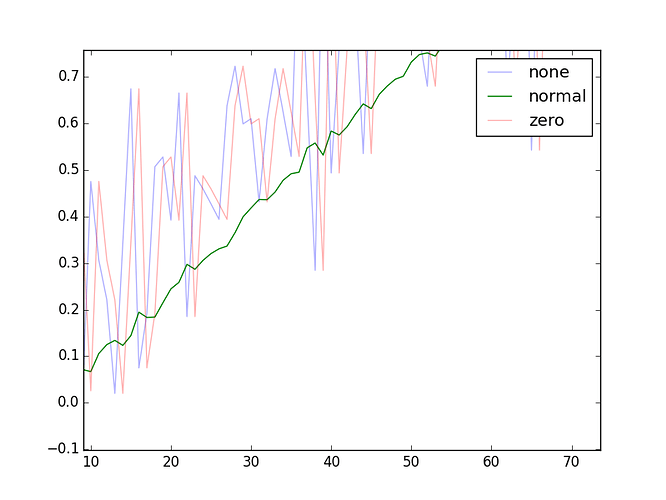My understanding of the difference between setting the synapse=0 and synapse=None is that None applies no filter and no time delay, but 0 applies a time-delay of one-step. Is this correct? Where is this documented? I had to figure it out again by running this code:
import nengo
import numpy as np
import matplotlib.pyplot as plt
with nengo.Network() as model:
in_nd = nengo.Node(lambda t: np.sin(20*t))
a_ens = nengo.Ensemble(100, 1)
nengo.Connection(in_nd, a_ens, synapse=None)
none_synapse = nengo.Probe(a_ens, synapse=None)
normal_synapse = nengo.Probe(a_ens, synapse=0.01)
zero_synapse = nengo.Probe(a_ens, synapse=0)
with nengo.Simulator(model) as sim:
sim.run(0.1)
plt.plot(sim.data[none_synapse], alpha=0.3)
plt.plot(sim.data[normal_synapse])
plt.plot(sim.data[zero_synapse], alpha=0.3)
plt.legend(["none", "normal", "zero"])
plt.show()
This gives the result:
